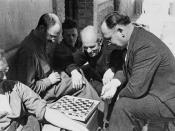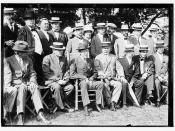A friend told me of the time he set his motherÃÂs kitchen on fire. The interface was an imposing row of perhaps seven fancy glass-coated stove burners. Accompanying to the stove burners was a set of seven black, palm-sensitive pads (similar to a laptopÃÂs touchpad).
My friend was attempting to fry three eggs. He placed the frying pan on the biggest stove, located on the far left corner and, as his instincts told him, pressed the corresponding black pad. Nothing. Mild Panic. Then after pressing all seven, the one he wanted ignited. Relief.
After two minutes, while the eggs were frying, he decided to go and cut some tomatoes and cucumbers to complement his eggs. Then, before he was finished cutting the tomatoes, the whole stove was on fire and the eggs practically disappeared under a cloud of coal-black smoke.
He promptly reached for the fire extinguisher behind the door and put out the fire.
Subsequently, his mother came in and gave him a good beating for behaving in such a rambunctious manner, while being oblivious to the fact that it was not his fault.
How could such a thing happen? A fire-stove has seven pads accompanying seven stoves. To turn one on, you must give it a short press and to turn it off, you must give it a longer press. The pad itself has no labels, who could discover the operation without the aid of the manual? With only one pad to control the operation of the stove, how could one know which one would keep the stoves burning and which one would turn them off?What an elegant design. Why, it managed to do two functions with only one button! But how was a first-time user of the stove to know this?Back in the day, operating a stove...


